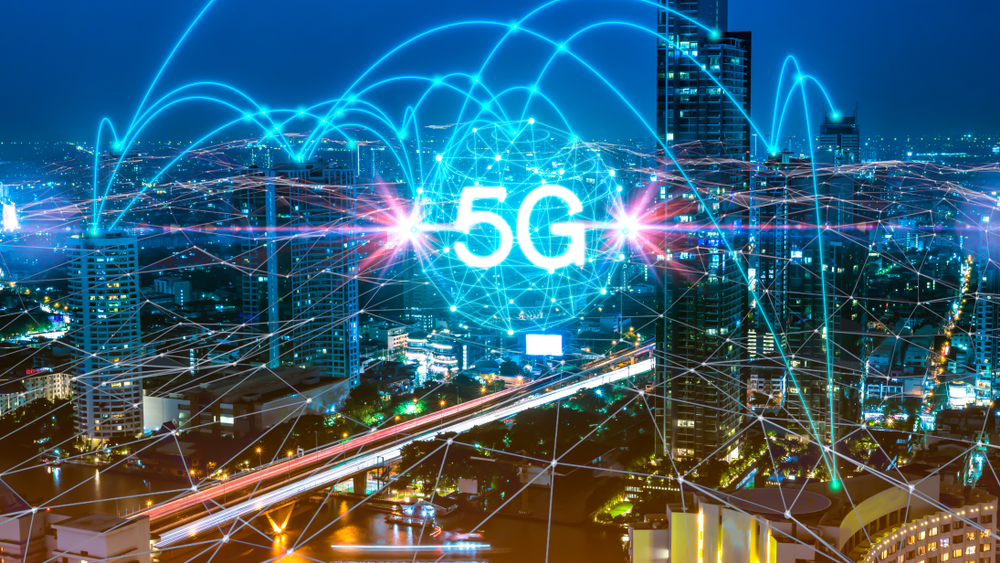We discuss the following topics in this blog:
- FTT-5G: Convergence of 5G and FTTH
- How Significant is Next-Gen RAN Infrastructure?
- Backhaul: Higher Capacity Upgrade
- Infrastructure Sharing
- How Important is Energy Optimisation?
In addition to these topics, we shall also be answering the following FAQs:
- What is WiFi?
- What is Open RAN?
Contents
Overview
Did your cousin mention downloading an HD movie in under 10 minutes but it took you almost 5x of that time or, your counterpart based out of South Korea is having a better and seamless video conferencing experience than you. It is most probably because they are based out of those few 378 cities where 5G has been deployed so far.
As the telecom operators gear up to deliver the promise of faster speed and lower latency with 5G making 4g a thing in the past, the telcos need to factor in these 5 drivers responsible for an optimized 5G coverage
FTT-5G: Convergence of 5G and FTTH
To deliver the increased bandwidth demand, densification of macro sites must happen. Reduction of the site-to-site distance with more and more small can be expensive. Low power small cells could be introduced closer to the homes like in the area already covered by a macro cell. With this FTTH and 5G would have great synergies and could help operators optimize the investments in spectrum, civil works, active and passive infrastructure.
As per recent studies conducted by FTTH council Europe, the convergence of 5G and FTTH is a very financially viable option. In high population density areas, an additional investment of 0.4% to the existing FTTH network could result in 96% savings in fibre cost of 5G xhaul.
How Significant is Next-Gen RAN Infrastructure?
Radio access network (RAN) infrastructure which constitutes of towers, antennas and base station constitutes a major part of the network TCO in 4g and is expected to further increase by 15% in 5G deployment.
Usage of C-RAN, also known as cloud-RAN could result in the TCO saving by as much as 25% as compared with distributed RAN (D-RAN) as a result of the centrally located base band unit (BBU).
Backhaul: Higher Capacity Upgrade
As per research from GSMA, in 4g, backhaul transport networks account for 15% of TCO. In 5G, operators need to upgrade the backhaul link to at least 10gbps or even 100 Gbps in some cases. The operators need to enhance the network capacity which can handle the traffic expected to be generated with the advent of 5G. This upgradation might inflate the backhaul cost by as much as 50%. The operators who own fibre network would have an upper hand when it will come to the network expansion and can mitigate the backhaul cost.
Infrastructure Sharing
As per the analysis done by GSMA on network sharing case studies for 4g, operators have realized TCO savings as high as 50% and similar cost mitigation is expected if the sharing model is replicated in 5G. Operators can chose to share right from spectrum to the active and passive infrastructure.
Operators could choose from options like micro level single neutral hosts (SNH) for places with space constraint to macro level – SNH
How Important is Energy Optimisation?
Switching to a renewable source of energy is the need of the hour. Not just for a sustainable future but, also for a sustainable business especially telcos which as an industry consumes around 3% of global energy and energy consumption also attributes to a major chunk of TCO.
With 5G densification would result in a greater number of sites operating on the latest technologies, which would surge the energy requirement by more than 100%. As telecom operators gear up to roll out 5G, they have a huge opportunity to deliver greener telecom footprint with the usage of renewable sources of energy like solar and wind supported by a drastic reduction in the cost of photovoltaic cells and wind turbines.
FAQs
What is WiFi?
Put simply, WiFi is a technology that uses radio waves to create a wireless network through which devices like mobile phones, computers, printers, etc., connect to the internet. A wireless router is needed to establish a WiFi hotspot that people in its vicinity may use to access internet services. You’re sure to have encountered such a WiFi hotspot in houses, offices, restaurants, etc.
To get a little more technical, WiFi works by enabling a Wireless Local Area Network or WLAN that allows devices connected to it to exchange signals with the internet via a router. The frequencies of these signals are either 2.4 GHz or 5 GHz bandwidths. These frequencies are much higher than those transmitted to or by radios, mobile phones, and televisions since WiFi signals need to carry significantly higher amounts of data. The networking standards are variants of 802.11, of which there are several (802.11a, 802.11b, 801.11g, etc.).
What is Open RAN?
From a deployment standpoint, we have Non-Standalone Mode(NSA), Dynamic Spectrum Sharing(DSS), and Standalone Mode (SA). The initial deployments of 5G NR are based on NSA standards, meaning the existing 4G LTE network will operate on the control plane, and 5G NR will be introduced to the user plane.
This particular standard was introduced by 3GPP, keeping in mind the industry’s push to faster 5G services rollout while utilizing the existing 4G LTE infrastructure currently in place. On the other hand, operators are also implementing Dynamic Spectrum Sharing (DSS) to accelerate the deployment cycle, which will reduce costs and improve spectrum utilization. In this standard, the same spectrum is shared between the 5G NR and 4G LTE, multiplexing over time per user demands. Lastly, we have the Standalone Mode (SA), which moves towards a complete 5G-based network where both signaling and the information transfer are driven by a 5G cell.















